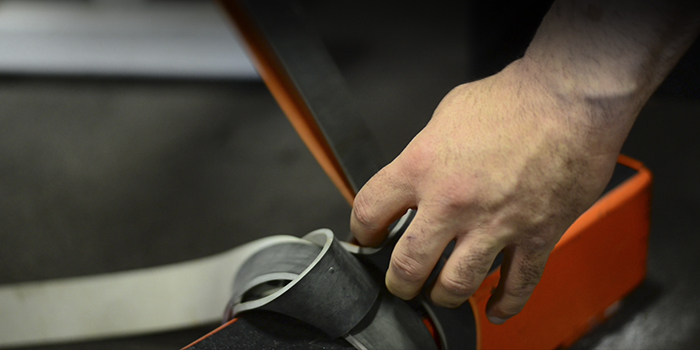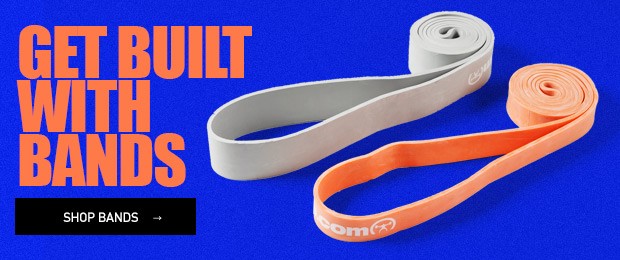
A little over five years ago I started implementing more accommodating resistance in my lower body max effort movements. About a year later I hit my first 1000-pound squat. More bands and chains made a big difference in my strength. Before stealing Donnie Thompson’s ‘No One Gives a Damn About Your Squat’ Routine we weren’t doing much work with chains and bands on our heavy days. Since the program worked so well for me, we started using a lot of the principles, not the exact program, in our athletes’ training. The majority of them got stronger and jumped higher. Bands might make her dance but they make our athletes strong and explosive.
In my last article on setting up bands, we talked about proper setup and determining tension.
This gives us a guide to scale down our band tension based on the lifters strength levels. A 700-pound squatter shouldn’t be using the same tension as a 200-pound squatter! When I looked at the band tension Donnie was using I knew I wasn’t as strong as he was so I had to scale it down to match. You can do this right down to beginner levels as well. All my band/chain poundage is based off my best competition squat since this is how I scaled it down from the original program. So the amount of band or chain being used could be used for whatever bar you are using. When determining band tension for our athletes we use the strength levels outlined in the article above.
WATCH: How to Set Up Bands Correctly for the Squat, Bench, and Deadlift
Most of the band tensions from my training stay consistent throughout the year with the exception of the week where I’m supposed to do two strong bands/side (400 pounds at the top), I typically don’t put that much on unless I’m getting ready for a meet because, well, it sucks. We can generally say the same for our athletes. Band tension for them typically follows the chart in my previous article (~25%). Similar to my training, when they are getting ready for their most important event is when we increase the band tension. The difference between them and myself is we DECREASE their bar weight on their dynamic days. Less bar weight and more band tension for them make them faster. It’s important to know what your priorities are in training and program accordingly.
The Workout
Our typical strength sessions start with some sort of tissue work (mobs as the kids say nowadays). We’re trying to get the tissue to move better before we move it. We try to target prime movers and common problem areas. Below are some of the more common ones we are implementing.
Lower body
- Softball or lacrosse ball in glutes/psoas/TFL
- X-wife
- Car buffer on target areas
- Soon we will be implementing Reflexive Performance Reset
- Band mobility
Upper Body
- Softball or lacrosse ball in pec/delts/lats
- X-wife or kettlebells on pec/shoulder/arms
- Car buffer
- Thompson shoulder complex
- Banded shoulder traction
Once the tissue is moving more efficiently then we start to move it. We follow the same guidelines with warm-ups as we do with the tissue work. We focus on the prime movers and areas of weakness.
Below is an outline of our training days.
- Tissue work
- Warm up
- Explosive work (med ball throws, box jumps, hurdle hops…)
- Dynamic or Max effort movements
- Accessory work (targeted at weaknesses)
- Tissue, mobility and or lengthening work
When you’re setting up your bands, no matter what bar you have, you have to have tension in the bottom of the movement. Refer back to the article above to make sure your bands are set up correctly.
CORRECTION: In the video, I mention using a 2x4 on the bottom of the monolift, I should have said a 4x4. If you listen closely while I explain this you can hear what a highly conditioned athlete sounds like as I gasp for what sounds like my last breath.
Much like setting up your squat, get your bands set up correctly from the bottom up and the rest will fall into place.











"Lower body
Softball or lacrosse ball in glutes/psoas/TFL
X-wife
Car buffer on target areas
Soon we will be implementing Reflexive Performance Reset
Band mobility
Upper Body
Softball or lacrosse ball in pec/delts/lats
X-wife or kettlebells on pec/shoulder/arms
Car buffer
Thompson shoulder complex
Banded shoulder traction"
Which is really fantastic and I love it.